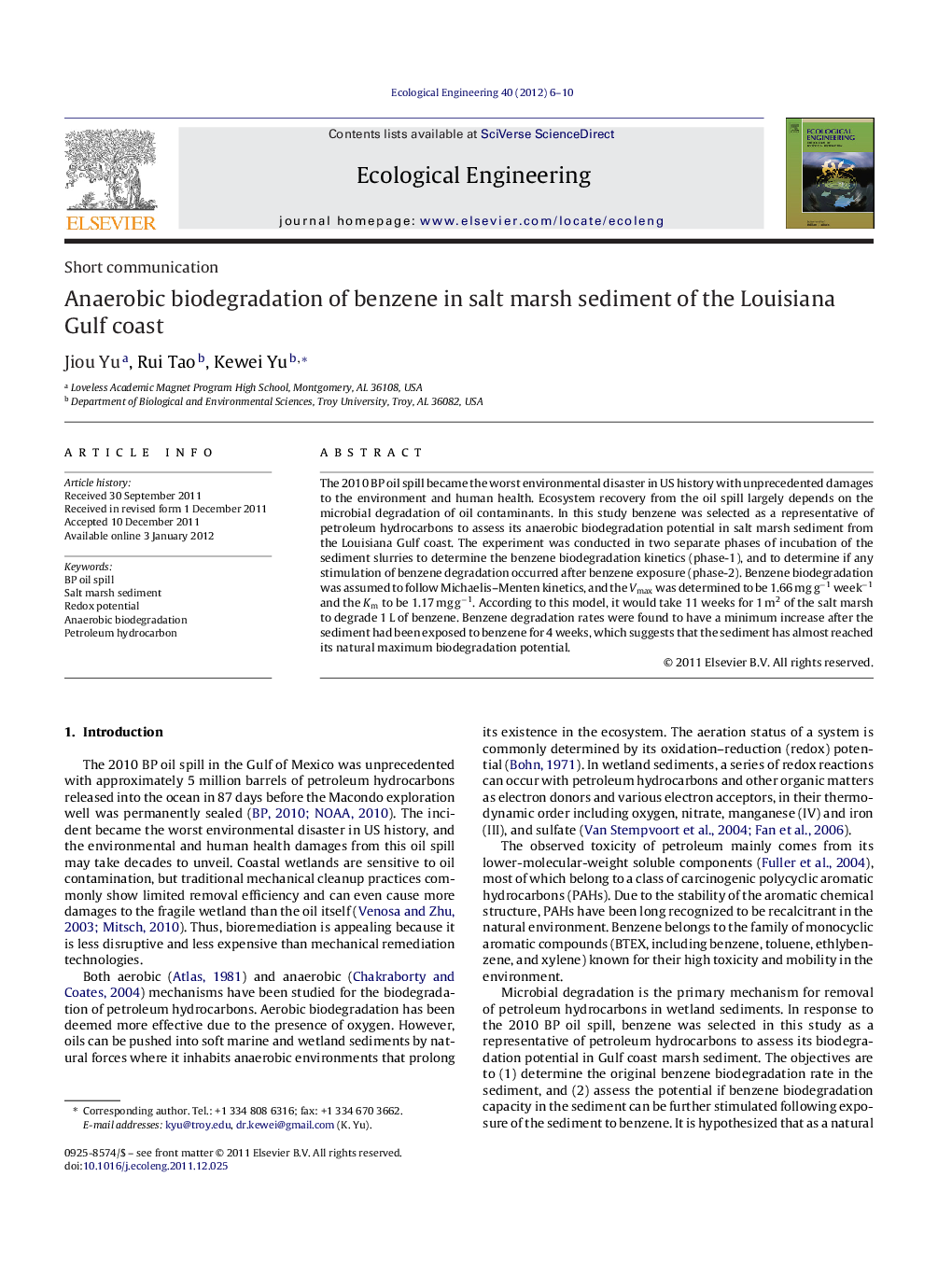| Article ID | Journal | Published Year | Pages | File Type |
|---|---|---|---|---|
| 4389942 | Ecological Engineering | 2012 | 5 Pages |
The 2010 BP oil spill became the worst environmental disaster in US history with unprecedented damages to the environment and human health. Ecosystem recovery from the oil spill largely depends on the microbial degradation of oil contaminants. In this study benzene was selected as a representative of petroleum hydrocarbons to assess its anaerobic biodegradation potential in salt marsh sediment from the Louisiana Gulf coast. The experiment was conducted in two separate phases of incubation of the sediment slurries to determine the benzene biodegradation kinetics (phase-1), and to determine if any stimulation of benzene degradation occurred after benzene exposure (phase-2). Benzene biodegradation was assumed to follow Michaelis–Menten kinetics, and the Vmax was determined to be 1.66 mg g−1 week−1 and the Km to be 1.17 mg g−1. According to this model, it would take 11 weeks for 1 m2 of the salt marsh to degrade 1 L of benzene. Benzene degradation rates were found to have a minimum increase after the sediment had been exposed to benzene for 4 weeks, which suggests that the sediment has almost reached its natural maximum biodegradation potential.
